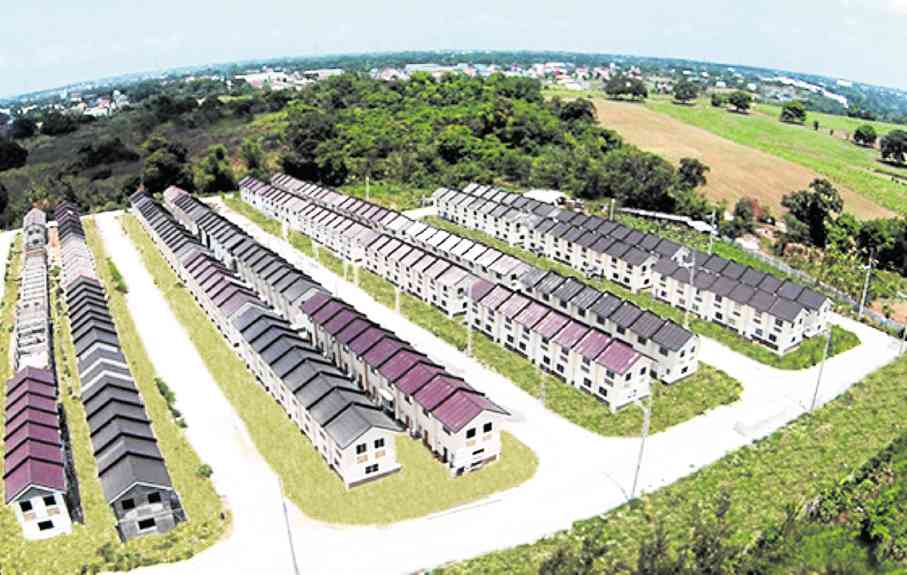Minimum-wage earner? you can still buy your own home
Recently, a major lending company in the United Kingdom commissioned a survey asking 2,000 Brits when their life milestones should be. The common consensus is that by the time those surveyed are 30 they should have ticked off everything from getting engaged at 25, to having a first child at 28 and buying a house at the age of 29.
Their aspirations may not be that different for those here in the Philippines. But while their British counterparts found it most difficult to achieve—and which took them longer than expected—were passing a driving test, buying a first car and then being able to afford a brand new car, majority of Filipinos would definitely agree that buying their own house would prove to be most challenging.
Proof is that there are at least 4 million houses still needed to be built. Moreover, in Metro Manila alone, the number of informal settlers is placed at 2.8 million—or about 556,526 families—as of 2010, according to the Metropolitan Manila Development Authority. And if current housing policies remain unchanged, the Subdivision and Housing Developers Association believed this housing backlog would balloon to 12.5 million houses by 2030, which is merely 14 years away.
Considering that 60 percent of the projected current demand are in the socialized (valued at P450,000 and below) and economic (priced at P1.2 million and below) housing category, it would be interesting to know what is currently available for the members of the Home Development Mutual Fund, more popularly known as the Pag-IBIG Fund, should they decide to buy their first house.
Housing loan program
Article continues after this advertisementPag-IBIG is currently implementing housing loan programs for several sectors of the labor force: the Affordable Housing Program (Subsidized Program), Employer Accreditation Program (EAP), and Home Matching Program. For minimum wage earners, the Subsidized Program, which was launched in 2012, would be very attractive.
Article continues after this advertisement
A VISIT to a nearby branch of the Pag-IBIG will definitely help one, even a minimum-wage earner, find the right house that matches his or her financial capacity
“The best time to buy a house depends on what makes the most sense for your situation. After all, no low downpayment or discount is worth rushing into a decision, paying a higher interest rate, or buying the wrong house. However, it would not hurt if you look around—visit housing fairs, drop by a display booth inside malls—since this would enable you to compare prices as well as features of various projects. You could even even let someone there to give you a good understanding like if you have enough upfront and ongoing money to buy a particular house. Of course, there is also Pag-IBIG that extends assistance even if you are a minimum-wage earner,” suggested SHDA national president Rodel Racadio.
Minimum-wage earners can borrow up to P450,000 for only 4.5 percent per annum. The rate is good for the first 10 years of the loan term which can go up to 30 years.
Moreover, thru the Subsidized Program, qualified Pag-IBIG members may borrow up to P750,000 with a maximum repayment period 30 years. Approval will depend on the individual’s gross monthly income, capacity to pay, and the loan-to-appraisal value ratio, whichever is the lowest. Interestingly, Pag-IBIG allows up to three qualified members to avail a single loan provided they are related within the second civil degree of consanguinity or affinity.
In 2015, Pag-IBIG approved P55.76 billion of loans to finance the construction or acquisition of 72,270 homes. This year, it targets to approve more than P60 billion of loans, to finance over 76,000 homes.
Various applications
The affordable housing loan may be used to buy a residential house and lot, townhouse or condominium unit; a fully developed residential lot or adjoining lots not exceeding 1,000 sqm; as well as the construction or completion of a residential unit on a lot owned by the member.
The Affordable Housing Program may be availed of by members who satisfy the following requirements:
- must have remitted 24 monthly contributions although new members may pay the 24 monthly membership contributions in lump sum, corresponding to the loan amount applied for;
- has a gross monthly income not exceeding P17,500 for those working in Metro Manila and P14,000.00 for workers in other regions;
- not more than 65 years old;
- has no outstanding Pag-IBIG housing loan;
- has no outstanding multi-purpose loan in arrears; and had no Pag-IBIG housing loan that was foreclosed, cancelled, bought back due to default or subjected to Dacion en Pago.
Provided the borrower has submitted all the necessary requirements (including proof of income; Transfer Certificate of Title or TCT; TCT of the land and Condominium Certificate of Title or CCT for condominium unit), regular processing time for a housing loan application takes 15 working days. For complete list of requirements one can log on to www.pagibigfund.gov.ph and click “Requirements” under “Housing Loan Availment”.
Appraisal value
In order to determine the loan to appraisal value, Pag-IBIG applies the following formula: if loan amount is up to P450,000, loan-to-appraisal value ratio is 100 percent. If it’s over P450,000 but not exceeding P750,000, it’s 90 percent.
As mentioned earlier, interest rate for loans of up to P450,000 is only 4.5 percent (provided the gross monthly income is P15,000 for those working in Metro Manila and P12,000 for workers in other regions) for the first 10 years of the loan. For loans of up to P750,000, the interest rate is 6.5 percent (provided the gross monthly income for those working in Metro Manila is not more than P17,500, and not more than P14,000 for workers in other regions).
At the end of the 10-year period, Pag-IBIG may re-priced the interest rate based on the prevailing interest rate in its pricing framework or it shall be increased by 2 percent, whichever is lower. Said interest rates shall be re-priced periodically depending on the chosen fixed pricing period of the borrower. The base rate for succeeding re-pricing shall be the interest rate for the immediately preceding re-pricing period.
A housing loan application may be filed online at www.pagibigfund.gov.ph by clicking “E-Services” on the Pag- IBIG website’s homepage, then clicking “Housing Loan Application.”
But to be sure, housing loan applicants could always drop by the Pag-IBIG office where the property subject of the loan is located.
